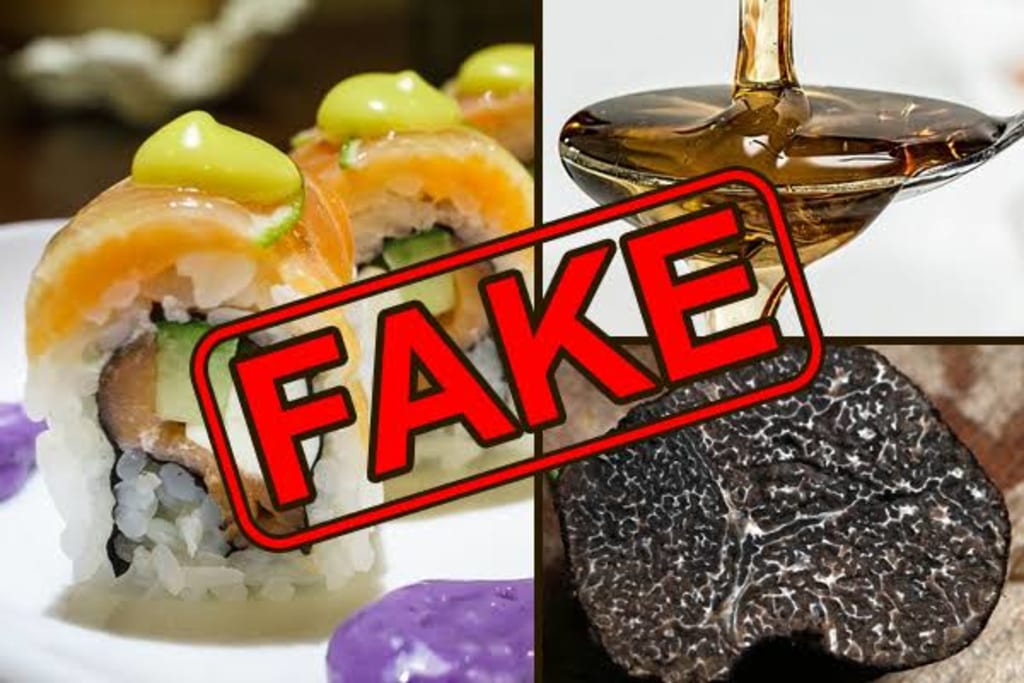Unveiling the World of Counterfeit Foods
From Maple syrup to Saffron

In the modern culinary world, we are spoiled for choice with a vast array of delectable foods and ingredients. However, not everything that graces our plates is what it seems. Counterfeit foods have infiltrated our grocery stores, restaurants, and kitchens, deceiving consumers with imitation products that lack authenticity. From maple syrup to saffron, we delve into the intricate web of counterfeit foods and discover how unscrupulous individuals exploit the love of good food for profit.
The Costly Reality of Real Maple Syrup
Few things can rival the sweet, natural goodness of real maple syrup. It takes an astonishing 40 gallons of sap to produce a single jug of genuine maple syrup. Consequently, the price tag attached to this liquid gold can reach up to ten dollars per bottle. However, the market is flooded with imitation syrups that bear no resemblance to the real thing. These imposters, often masquerading as "pancake syrup" or "table syrup," are formulated from a blend of corn syrup, high fructose corn syrup, caramel color, and artificial flavorings. While they may not be illegal, they pale in comparison to the pure, 100% maple syrup made from the sap of maple trees.
Unmasking Truffle Deception
The intoxicating aroma and earthy flavor of truffles have earned them a coveted spot in haute cuisine. Real truffles, found primarily in places like Italy and France, grow underground in symbiotic relationships with specific tree species. Historically, pigs were trained to sniff out these treasures, but now dogs take on the task.
The challenge with truffles lies not only in their rarity but also in their susceptibility to fraud. Truffle hunters often encounter counterfeit truffles sold as genuine, or truffle oil, which is a common imitation. Truffle oil is a blend of olive or sunflower oil infused with a synthetic compound called 2-4 dithia pentane, mimicking the aroma of truffles. It's essential to scrutinize labels for terms like "truffle flavoring" or "aroma" and opt for authenticity by seeking freshly shaved truffles.
Maple Syrup vs. Imitations: A Sticky Situation
Maple syrup, a symbol of North American breakfasts, is another victim of fraudulent food practices. Authentic maple syrup is meticulously tapped from maple trees, with Canada producing the lion's share of the world's supply. The process is arduous, with approximately 44 gallons of sap needed to yield just one gallon of pure maple syrup. The outcome is a golden, sweet nectar that can cost up to six times more than its synthetic counterparts.
Imitation syrups often substitute genuine sap with a blend of corn syrup and artificial flavors. To distinguish between real and fake, consumers should scrutinize the label. Authentic maple syrup will proudly display "100% maple syrup" or "pure maple syrup" in its ingredients, whereas imitations might list ingredients like "pancake syrup" or "table syrup."
Wasabi: Unmasking the Green Imposter
Wasabi, a staple condiment in Japanese cuisine, is another food that frequently falls victim to deception. True wasabi is derived from the rhizome of the Wasabia japonica plant, offering a pungent, sinus-clearing kick. Unfortunately, what many are served as wasabi is a far cry from the real thing.
Imitations of wasabi often contain a mixture of horseradish, a sweetener, and food starch. The FDA doesn't have specific regulations for the term "wasabi," so imitations can legally carry the label as long as the ingredients list is accurate. To experience the authentic flavor, seek out wasabi that's grated fresh right before your eyes, as it should resemble a chunky, gritty paste rather than a smooth, fiery imitation.
Parmesan Cheese: The Grated Riddle
Parmesan cheese, known for its rich umami flavor and savory crystals, is another victim of counterfeit foods. Authentic Parmigiano-Reggiano, often hailed as the "king of cheeses," is meticulously crafted in the Emilia-Romagna region of Italy. Here, dairy artisans adhere to strict regulations that mandate the use of specific ingredients and methods.
In contrast, the US allows products labeled as "Parmesan" to deviate significantly from the Italian standards. In some cases, these cheeses contain fillers like rice flour or cellulose, a substance derived from wood pulp. These fillers are used to prevent the cheese from clumping together, but they're often present in higher amounts than indicated on the label. Shoppers should opt for Parmigiano-Reggiano from Italy or seek cheeses labeled as "100% Parmesan" to ensure they're enjoying the real deal.
Vanilla: Not Always Sweet
Vanilla, a beloved flavor in desserts and beverages, is another counterfeit battleground. Real vanilla extract is painstakingly derived from vanilla beans, typically grown in regions like Madagascar. The process involves hand-pollination, sun-drying, and extraction using a mixture of alcohol and water.
Counterfeit vanilla products often substitute genuine extract with lab-made vanillin, derived from petroleum or alternative sources. While these synthetic versions might be chemically identical, they lack the depth and complexity of true vanilla. Discerning consumers can distinguish between the two by assessing the ingredient list and opting for products that contain "vanilla bean extractives."
Caviar: The Luxury Delicacy
Caviar, renowned for its exquisite taste and opulent reputation, is also plagued by counterfeiting. Authentic caviar is composed of the roe (eggs) of sturgeon, a critically endangered fish. It takes a decade or more for sturgeon to reach maturity before their eggs can be harvested.
Counterfeiters often use cheaper fish eggs or mislabel lower-grade caviar as premium, aiming to capitalize on the allure of this luxurious treat. While distinguishing between real and fake caviar can be challenging, a hot water test can help. Real caviar will harden in hot water, whereas fake caviar will dissolve. Additionally, authentic caviar will feature uniform, glossy eggs, while counterfeits may appear irregular and dull.
Honey: The Sticky Dilemma
Honey, revered for its sweetness and versatility, is a common victim of counterfeiting. Authentic honey is the result of bees diligently collecting nectar and converting it into honey through a natural enzymatic process. However, counterfeit honey often floods the market, with fraudulent products originating from various sources, including China.
These fake honey products are frequently adulterated with sugars like high fructose corn syrup or glucose. To distinguish between genuine honey and its imitations, consumers should avoid products labeled as "honey blend" and inspect ingredient lists. Real honey will typically be labeled as "100% honey" or "pure honey."
Olive Oil: A Liquid Goldmine for Fraud
Extra virgin olive oil, known for its rich flavor and health benefits, is a lucrative target for counterfeiters. Genuine extra virgin olive oil is extracted solely from olives using mechanical methods, without heat or chemicals. Spain, Italy, and Greece are renowned for producing some of the world's finest olive oils.
However, counterfeiters often cut corners, mixing inferior oils with misleading labels and false certifications. To safeguard against fraudulent olive oil, consumers should seek products labeled
About the Creator
Daniella Agadi
I am an enthusiast for facts and fiction






Comments
There are no comments for this story
Be the first to respond and start the conversation.